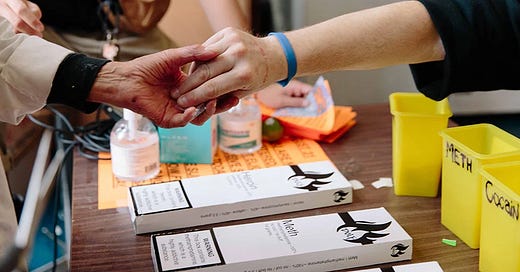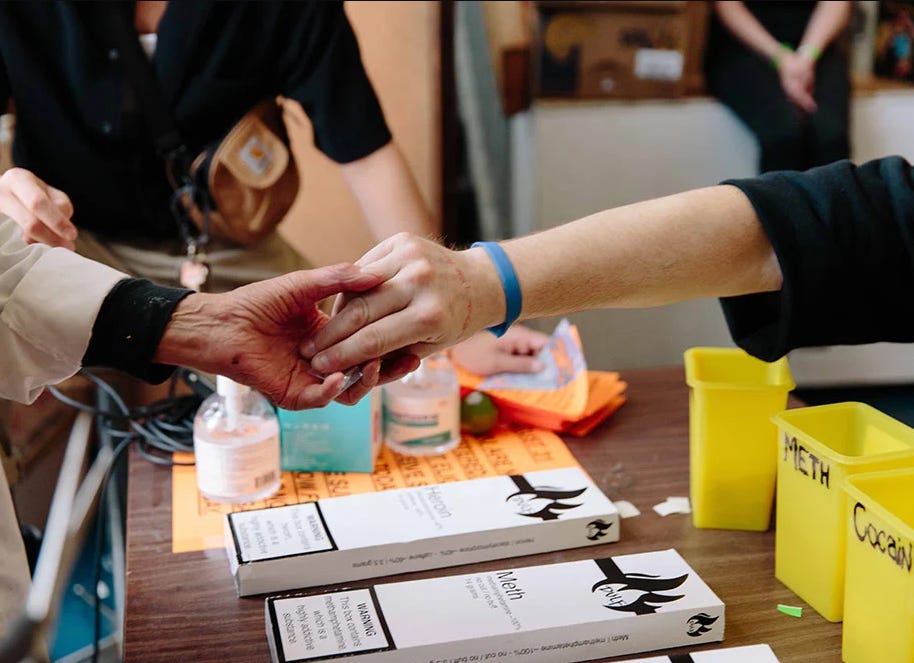B.C. Safer Supply: A Policy Under Fire
For years, the B.C. government assured the public that its "safer supply" program was a necessary step in combating the opioid crisis. Officials downplayed concerns that taxpayer-funded opioids could be diverted into the black market, often calling such warnings "misinformation."
Now, a leaked document from the B.C. Ministry of Health raises serious concerns about widespread diversion.
The Smoking Gun: Leaked Report Reveals Drug Diversion
A government presentation, originally intended for law enforcement, suggests that "significant" quantities of government-supplied opioids have been diverted to the black market and are being trafficked across Canada and internationally. The report highlights the scale of the issue:
19,751,000 mg of hydromorphone distributed over two years—equivalent to 2.5 million 8-mg pills.
1.4 million mg of oxycodone handed out—70,000 20-mg pills reaching users.
Concerns raised that some individuals may be selling their safer supply to obtain stronger, deadlier drugs like fentanyl.
This program was meant to save lives. Instead, new evidence suggests it may be contributing to an illicit market.
The Human Cost: Families Speak Out
While the program intends to reduce overdoses, some families are mourning the loss of loved ones who they believe could have been helped with treatment instead.
Rory’s Story – ‘He Needed Help, Not More Drugs’
Rory W., a 26-year-old struggling with addiction in Victoria, wanted to get clean. Instead, he was provided free hydromorphone through B.C.'s safer supply program. His mother, Jennifer, pleaded for her son to receive detox support. Instead, he continued to receive prescriptions.
Weeks later, Rory was found dead in a tent, having overdosed on fentanyl.
“He needed treatment. He needed real help. Instead, he got more drugs,” his mother said.
Tyler’s Story – Flipping Safer Supply to Buy Fentanyl
In 2023, 23-year-old Tyler from Prince George started receiving safer supply opioids. Almost immediately, his family noticed a disturbing trend. Instead of using the hydromorphone, he was reportedly selling it—to buy fentanyl.
RCMP later confirmed that prescription opioids were appearing in the illicit market. One night, Tyler took a hit of fentanyl laced with benzodiazepines. He never woke up.
“We thought the program was supposed to help, but instead, it gave him an easier way to stay trapped in addiction,” his sister said.
Concerns About Street Resale
In Vancouver’s Downtown Eastside, reports suggest that government-supplied opioids are being resold outside pharmacies.
David McEvoy, an addiction outreach worker, shared his observations:
“You can see people walking out of pharmacies and selling their pills within minutes.”
This raises urgent questions: Is this the harm reduction model we need? Or is it inadvertently fueling the crisis?
Police and Experts Sound the Alarm
Concerns about diversion are not new. Law enforcement, addiction experts, and some healthcare professionals have warned for years about the risks of supplying opioids without sufficient oversight.
Even when Vancouver Police Deputy Chief Fiona Wilson testified before Parliament that half the hydromorphone pills they seized came from safer supply, the government maintained that diversion was not a major issue.
March 2024 – Solicitor General Downplays Concerns
B.C. Solicitor General Mike Farnworth stated that widespread diversion was “simply not true.”
November 2023 – Science World Event Downplays Concerns
At an event titled Misinformation and the Toxic Drug Crisis, some experts dismissed the idea that diversion was a major issue, calling concerns “exaggerated.”
June 2023 – Coroner’s Office Reports No Direct Link
Then-chief coroner Lisa Lapointe noted that safer supply opioids were not a significant factor in overdose deaths, though no data was provided on how many prescriptions were being resold.
Accountability and the Need for a Better Approach
The B.C. government implemented the safer supply program with good intentions. However, new evidence suggests a serious gap in oversight.
Now, critical questions must be asked:
Will Health Minister Josie Osborne commit to strengthening monitoring of the program?
Will Provincial Health Officer Bonnie Henry address concerns about unintended consequences?
Will the federal government reconsider aspects of its harm reduction strategy?
A Path Forward: Treatment and Oversight
Experts agree: Addiction treatment must be prioritized. Harm reduction can only work if it is paired with comprehensive addiction care, including:
Stronger oversight of opioid distribution to prevent resale.
Immediate investment in detox and recovery programs so individuals have alternatives.
Support for families advocating for treatment over indefinite opioid maintenance.
Final Thought: Balancing Compassion With Responsibility
The opioid crisis requires urgent action, but good intentions are not enough.
Safer supply should not mean unchecked distribution. It must be part of a broader recovery-focused system that ensures those who need help get real treatment—not just more pills.




